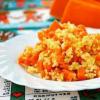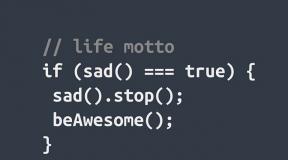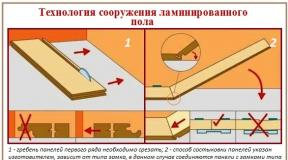Diabeton MV (60 mg): instructions for use. Diabeton MV: instructions for use, reviews, inexpensive analogues Is it possible to take Diabeton and Glucophage at the same time? Which of these drugs is better
Instructions for use
Additional Information
Diabeton MV is a cure for type 2 diabetes. The active ingredient is gliclazide. It stimulates the beta cells of the pancreas to produce more insulin, thereby lowering blood sugar. Refers to sulfonylurea derivatives. CF are modified release tablets. Gliclazide is not released from them immediately, but evenly within 24 hours. This provides benefits in diabetes management. However, Diabeton is not considered the first choice for type 2 diabetes. It is recommended to prescribe it only after metformin. Read in the article for detailed indications for use, contraindications, dosages, advantages and disadvantages of Diabeton MB. Find out what you can substitute for this medicine to avoid harm from its side effects
Drug card
| pharmachologic effect | Tablets that lower blood sugar from the group of sulfonylurea derivatives. Stimulates the production of insulin by the beta cells of the islets of Langerhans in the pancreas. The drug not only enhances the second phase of insulin secretion, but also restores its early peak in response to glucose intake. It also reduces the risk of small vessel thrombosis. Diabeton MB molecules exhibit antioxidant properties. |
| Pharmacokinetics | Taking the drug once a day ensures that the effective concentration of gliclazide in the blood plasma is maintained for more than 24 hours. It is excreted mainly by the kidneys in the form of metabolites, less than 1% - in the urine unchanged. In the elderly, no significant changes in pharmacokinetic parameters are observed. Food intake does not affect the rate or extent of absorption of gliclazide. |
| Indications for use | Type 2 diabetes if diet and exercise are not helping. Prevention of complications of diabetes mellitus: reducing the risk of microvascular (nephropathy, retinopathy) and macrovascular complications (myocardial infarction, stroke) through intensive control of blood sugar. |
| Dosage | The initial dosage for adults, including the elderly, is 30 mg per day (1/2 tablet). It is increased no more often than once every 2-4 weeks if the sugar is not lowered enough. The appropriate dosage is selected strictly individually, in terms of blood glucose and glycated hemoglobin HbA1C. Maximum dose- 120 mg per day. May be combined with other diabetes medications. One tablet of the drug Diabeton 80 mg can be replaced by 1/2 tablet with a modified release of Diabeton MB 60 mg. When transferring patients from the drug Diabeton 80 mg to Diabeton MB, it is recommended to measure sugar with a glucometer several times a day, carefully monitor it. Read also ““. |
| Side effects | The most dangerous side effect is reduced sugar in the blood, hypoglycemia. Her symptoms: headache, increased fatigue, irritability, nightmares, palpitations. In severe cases, the patient may lose consciousness. Read more in the article "". Diabeton MV causes severe hypoglycemia less often than other drugs - sulfonylurea derivatives. Other side effects- abdominal pain, nausea, vomiting, diarrhea, constipation, rash, itchy skin, increased activity of liver enzymes (AST, ALT, ALP). At the beginning of taking Diabeton, there may be temporary visual impairments - due to the fact that blood sugar is rapidly decreasing. Hepatitis and jaundice are also possible, but rarely. Adverse changes in blood composition are extremely rare. |
| Contraindications | Diabeton MB and other sulfonylurea derivatives have an extensive list of contraindications:
Prescribe with caution:
|
| Pregnancy and breastfeeding | Diabeton MB and other diabetes pills should not be taken during pregnancy. If you need to lower blood sugar, do it with diet and insulin injections. Pay close attention to diabetes management during pregnancy to avoid difficult labor and fetal malformations. It is not known whether the drug penetrates into breast milk... Therefore, it is not prescribed during lactation. |
| Drug interactions | Many medications increase the risk of hypoglycemia when taken with Diabeton. This should be taken into account by the doctor when prescribing the combined treatment of diabetes with acarbose, metformin, thiazolidinediones, dipeptidyl peptidase-4 inhibitors, GLP-1 agonists, and insulin. The effect of Diabeton MV is enhanced by drugs for hypertension - beta-blockers and ACE inhibitors, as well as fluconazole, histamine H2 receptor blockers, MAO inhibitors, sulfonamides, clarithromycin. Other drugs can weaken the effects of gliclazide. Read more official instructions by application. Tell your doctor about all medications, dietary supplements and herbs you are taking before you are prescribed diabetes pills. Figure out how to control your blood sugar yourself. Know what to do if it goes up or, on the contrary, goes down too much. |
| Overdose | In case of an overdose with sulfonylurea derivatives, hypoglycemia may develop. Blood sugar will fall below normal, and this is dangerous. Mild hypoglycemia can be treated on its own, and in severe cases, emergency medical attention is required. |
| Release form | Modified release tablets are white, oval, biconvex, with a notch and “DIA” “60” engraving on both sides. |
| Storage conditions and periods | Keep out of the reach of children, no special conditions are required. Shelf life is 2 years. Do not use after the expiration date printed on the package. |
| Composition | The active ingredient is gliclazide, 60 mg per tablet. Excipients - lactose monohydrate, maltodextrin, hypromellose, magnesium stearate, colloidal anhydrous silicon dioxide. |
The use of the drug Diabeton
The drug Diabeton in conventional tablets and modified release (MB) is prescribed for people with type 2 diabetes who are not adequately controlled by diet and exercise. The active substance of the drug is gliclazide. It belongs to the group of sulfonylurea derivatives. Gliclazide stimulates the beta cells of the pancreas to produce and release more insulin into the blood, a hormone that lowers sugar.
It is recommended, first of all, to prescribe to patients with type 2 diabetes not Diabeton, but the drug metformin - the drugs Siofor, Glucophage or Glyformin. The dosage of metformin is gradually increased from 500-850 to 2000-3000 mg per day. And only if this agent does not lower sugar enough - sulfonylurea derivatives are added to it.
Many doctors prescribe Diabeton CF to their patients instead of metformin. However, this is wrong, does not correspond official guidelines... Gliclazide and metformin can be combined. Taking these pills together usually helps keep the patient with diabetes normal sugar for several years.
Gliclazide in sustained-release tablets acts evenly over 24 hours. Today, diabetes management standards recommend that physicians prescribe Diabeton MB to their type 2 diabetic patients instead of the previous generation sulfonylurea derivatives. See, for example, the article “Results of the“ DYNASTY ”study (“ Diabeton MB: an observational program among patients with type 2 diabetes mellitus in routine practice ”)” in the journal “Problems of Endocrinology” No. 5/2012, authors M.V. Shestakova, O K. Vikulova and others.
Diabeton MV significantly lowers blood sugar. Patients like that it is convenient to take it once a day. It works safer than the older sulfonylurea drugs. However, it has harmful effects that make it better for people with diabetes not to take it at all. Read below what is the harm of Diabetone, which outweighs all its benefits. The site promotes effective methods of treating type 2 diabetes without harmful pills.
Advantages and disadvantages
Treatment of type 2 diabetes with the drug Diabeton MV gives short-term good results:
- in patients, blood sugar is significantly reduced;
- the risk of hypoglycemia is no more than 7%, which is much lower than for other sulfonylurea derivatives;
- it is convenient to take the medicine once a day, so that patients do not quit treatment;
- against the background of taking gliclazide in sustained-release tablets, the body weight in patients increases slightly.
Diabetone MB has become a popular type 2 diabetes drug because it has benefits for doctors and is convenient for patients. It is many times easier for endocrinologists to prescribe pills than to motivate diabetics to follow a diet and exercise. The drug quickly lowers sugar and is well tolerated. No more than 1% of patients complain of side effects, and all the rest are satisfied.
Disadvantages of the drug Diabeton MV:
- It accelerates the death of beta cells in the pancreas, which can lead to severe type 1 diabetes. This usually occurs within 2 to 8 years.
- For slender and thin people especially quickly causes severe insulin-dependent diabetes - no later than after 2-3 years.
- Does not eliminate the cause of type 2 diabetes - decreased sensitivity of cells to insulin. This metabolic disorder is called insulin resistance. Taking Diabeton can increase it.
- Lowers blood sugar, but does not reduce mortality. This was confirmed by the results of a large international study ADVANCE.
- This medication may cause hypoglycemia. True, its likelihood is less than if other sulfonylurea derivatives are taken. However, type 2 diabetes can be easily controlled without the risk of hypoglycemia at all.
Experts have known since the 1970s that sulfonylurea derivatives cause the transition of type 2 diabetes to severe insulin-dependent type 1 diabetes. However, these drugs are still prescribed. The reason is that they take the burden off doctors. If there were no pills that lower sugar, then doctors would have to prescribe diet, exercise and insulin therapy for each diabetic. This is hard and thankless work. Patients behave like the hero of Pushkin: "it is not difficult to deceive me, I myself am glad to be deceived." They are willing to take medicine, but they do not like to follow a diet, exercise, and even more so injecting insulin.
Diabeton MV - harmful pills. However, the previous generation sulfonylurea derivatives are even worse. The disadvantages that are listed above are more pronounced. Diabeton MB at least does not affect mortality, while other drugs increase it. If you are not ready to switch to, then at least take modified release tablets (MB).
The destructive effect of Diabeton on the beta cells of the pancreas practically does not bother endocrinologists and their patients. There are no publications in medical journals about this problem. The reason is that most people with type 2 diabetes do not have time to live before they develop insulin-dependent diabetes. Their cardiovascular system turns out to be a weaker link than the pancreas. Therefore, they die from a heart attack or stroke. Treating type 2 diabetes with a low-carbohydrate diet simultaneously normalizes blood sugar, blood pressure, cholesterol blood test results, and other cardiovascular risk factors.
Clinical trial results
The main clinical trial of the drug Diabeton MB was the study ADVANCE: Action in Diabetes and VAscular disease -
preterax and Diamicron MR Controlled Evaluation. It was started in 2001 and the results were published in 2007-2008. Diamicron MR - under this name, gliclazide in modified release tablets is sold in English-speaking countries. This is the same as the drug Diabeton MV. Preterax is a combination medicine for hypertension, the active ingredients of which are indapamide and perindopril. In Russian-speaking countries, it is sold under the name Noliprel. The study involved 11,140 patients with type 2 diabetes and hypertension. They were watched by doctors at 215 medical centers 20 countries of the world.
Diabeton MV lowers blood sugar but does not reduce mortality in type 2 diabetics.
The study found that pressure pills in type 2 diabetics reduce the incidence of cardiovascular complications by 14%, kidney problems by 21%, and mortality by 14%. At the same time, Diabeton MB lowers blood sugar, reduces the incidence of diabetic nephropathy by 21%, but does not affect mortality. Russian-language source - article "Controlled treatment of patients with type 2 diabetes mellitus: the results of the ADVANCE study" in the journal "Systemic hypertension" No. 3/2008, author Yu. Karpov. Original source - “The ADVANCE Collaborative Group. Intensive blood glucose control and vascular outcomes in patients with type 2 diabetes "in The New England Journal of Medicine, 2008, No. 358, 2560–2572.
People with type 2 diabetes are prescribed sugar-lowering pills and insulin injections if diet and exercise are not working well. In fact, patients simply do not want to follow a low-calorie diet and exercise. They prefer to take medication. It is officially believed that others effective methods there is no treatment other than drugs and injections of large doses of insulin. Therefore, doctors continue to use sugar-lowering pills that do not lower mortality. On the site you can learn how to easily control type 2 diabetes without a "fast" diet and insulin injections. There is no need to take harmful medications because alternative therapies work well.
Modified release tablets
Diabeton MV - modified release tablets. The active ingredient - gliclazide - is released from them gradually, and not immediately. Due to this, a uniform concentration of gliclazide in the blood is maintained for 24 hours. It is enough to take this drug once a day. As a rule, it is prescribed in the morning hours. Regular Diabetes (no CF) is an older medication. Its tablet dissolves completely in the gastrointestinal tract after 2-3 hours. All the gliclazide that it contains immediately enters the bloodstream. Diabeton MV lowers sugar smoothly, while conventional tablets - abruptly, and their effect quickly ends.
Modern modified release tablets have significant advantages over older formulations. The main thing is that they are safer. Diabeton MV causes hypoglycemia (low sugar) several times less frequently than ordinary Diabeton and other sulfonylurea derivatives. According to research, the risk of hypoglycemia is no more than 7%, and it usually goes away without symptoms. Severe hypoglycemia with impaired consciousness rarely occurs while taking a new generation of drugs. This drug is well tolerated. Side effects are noted in no more than 1% of patients.
Comparison of Diabetone MB and Rapid Release Tablets
In articles in medical journals, it is noted that the molecule of Diabetone MB, due to its unique structure, is an antioxidant. But this has no practical value, it does not affect the effectiveness of diabetes treatment. It is known that Diabeton MV reduces the formation of blood clots. This can reduce the risk of stroke. But nowhere has it been proven that the drug really gives such an effect. Above were listed the disadvantages of the drug for diabetes - sulfonylurea derivatives. In Diabeton CF, these disadvantages are less pronounced than in older drugs. It has a more sparing effect on the beta cells of the pancreas. Insulin-dependent type 1 diabetes does not develop as quickly.
How to take this drug
Diabeton MV is taken once a day, usually with breakfast. A 60 mg scored tablet can be split in two to give a 30 mg dose. However, it must not be chewed or crushed. While taking the medicine, drink it with water. Site site promotes effective ways treating type 2 diabetes. They allow you to abandon Diabetone so as not to be exposed to its harmful effects. However, if you do take pills, then do it every day without skipping. Otherwise, the sugar will rise too high.
While taking Diabeton, alcohol tolerance may worsen. Possible Symptoms- headache, shortness of breath, heart palpitations, abdominal pain, nausea and vomiting.
Diabetone can cause hypoglycemia, and alcohol will mask the symptoms. This is dangerous! Fainting due to low sugar outwardly similar to strong alcoholic intoxication. High risk of death! Reduce your consumption of hard liquor or do not drink at all. At least figure it out.
Sulfonylurea derivatives, including Diabeton MB, are not the first choice drugs for type 2 diabetes. It is officially recommended that patients be prescribed first). Gradually, their dose is increased to the maximum - 2000-3000 mg per day. And only if this is not enough, add another Diabeton MV. Doctors who prescribe Diabetone instead of Metformin are doing the wrong thing. Both drugs can be combined with good results. Better yet, switch to a type 2 diabetes treatment program without taking harmful pills.
Diabeton MV can be combined with other diabetes pills, except for sulfonylurea derivatives and glinides (meglitinides). Read also ““. If Diabeton does not lower blood sugar, then you need to transfer the patient to insulin injections. In such a situation, no other pills will help. Start injecting insulin, do not waste time, otherwise severe complications of diabetes will appear.
Sulfonylurea derivatives make the skin more sensitive to UV radiation. There is an increased risk of sunburn. It is recommended to use sunscreen and it is best not to sunbathe. Consider the risk of hypoglycemia that Diabetone can cause. While driving or doing hazardous work, have your blood glucose meter checked every 30 to 60 minutes.
Who does it not suit
Diabetone CF should not be taken by anyone at all because alternative therapies for type 2 diabetes work well and have no side effects. The following are the official contraindications. Also find out which categories of patients should be used with caution.
Any sugar-lowering tablets are contraindicated during pregnancy and breastfeeding. Diabeton MV is not prescribed for children and adolescents, because its efficacy and safety for this category of patients has not been established. Do not take this drug if you have been allergic to it or other sulfonylurea derivatives in the past. This medicine should not be taken by people with type 1 diabetes, or if you have an unstable course of type 2 diabetes or frequent episodes of hypoglycemia.
If you follow a low-carbohydrate diet, there is an increased risk that Diabeton tablets will cause hypoglycemia. It is necessary to reduce the dosage, or it is better to refuse to take them altogether. Low-carb diet alternatives for type 2 diabetes are good at lowering blood sugar, so there is no need to take harmful medications.
Sulfonylurea derivatives should not be taken by people with severe liver and kidney disease. If you have diabetic nephropathy, talk to your doctor. Most likely, he will advise you to replace the pills with insulin injections. For elderly people, Diabeton CF is officially suitable if their liver and kidneys are working normally. Unofficially - it stimulates the transition of type 2 diabetes to severe insulin-dependent type 1 diabetes. Therefore, diabetics who want to live a long time without complications, it is better not to take it.
In what situations is Diabeton MV prescribed with caution:
- hypothyroidism - a weakened function of the thyroid gland and a lack of its hormones in the blood;
- deficiency of hormones that are produced by the adrenal glands and the pituitary gland;
- irregular meals;
- alcoholism.
Diabeton's analogs
The original drug Diabeton MV produces pharmaceutical company Servier laboratory (France). Since October 2005, it has stopped supplying the previous generation of drugs to Russia - Diabeton 80 mg tablets quick action... Now you can buy only original Diabeton MB - modified release tablets. This dosage form has significant advantages and the manufacturer decided to focus on it. However, gliclazide in rapid-release tablets is still marketed. These are analogs of Diabeton, which are produced by other manufacturers.
Analogues of the drug Diabeton MV
Analogs of tablets Diabeton rapid release
Preparations, active ingredient which is gliclazide in quick-release tablets are now considered obsolete. It is advisable to use Diabeton MV or its analogs instead. Even better is a type 2 diabetes treatment method based on. You will be able to keep your blood sugar at a stable level, and you will not need to take harmful medications.
Diabeton or Maninil - which is better
The source for this section was the article "Risks of general and cardiovascular mortality, as well as myocardial infarction and acute cerebrovascular accident in patients with type 2 diabetes mellitus, depending on the type of starting glucose-lowering therapy" in the journal "Diabetes mellitus" No. 4/2009. Authors - I.V. Misnikova, A.V. Dreval, Yu.A. Kovalev.
Different treatments for type 2 diabetes affect the risk of heart attack, stroke, and overall mortality in patients in different ways. The authors of the article analyzed the information contained in the diabetes mellitus register of the Moscow region, which is part of the State register of diabetes mellitus of the Russian Federation. They looked at data from people diagnosed with type 2 diabetes in 2004. We compared the effect of sulfonylurea derivatives and metformin if they were treated for 5 years.
It turned out that drugs - sulfonylurea derivatives - harm rather than help. How They Acted Compared to Metformin:
- the risk of general and cardiovascular mortality was doubled;
- the risk of heart attack - increased by 4.6 times;
- the risk of stroke was increased threefold.
Moreover, glibenclamide (Maninil) turned out to be even more harmful than gliclazide (Diabeton). True, the article did not indicate which forms of Manilil and Diabeton were used - sustained-release tablets or conventional tablets. It would be interesting to compare the data with patients with type 2 diabetes who were immediately prescribed insulin treatment instead of pills. However, this was not done because there were not enough such patients. The vast majority of patients categorically refused to inject themselves with insulin, so they were prescribed pills.
Frequently asked questions and answers to them
The diabetes controlled my type 2 diabetes well for 6 years and has now stopped helping. I increased his dose to 120 mg per day, but blood sugar is still high, 10-12 mmol / l. Why has the drug lost its effectiveness? How to be treated now?
Diabeton is a sulfonylurea derivative. These pills lower blood sugar, but they also have harmful effects. They gradually destroy the beta cells of the pancreas. After 2-9 years of taking them, the patient's body begins to really lack insulin. The drug has lost its effectiveness because your beta cells are “burned out”. This could have happened before. How to be treated now? You need to inject insulin, no options. Because you have type 2 diabetes progressed to severe type 1 diabetes. Stop Diabeton, switch to, and still inject insulin to keep blood sugar at a normal level.
An elderly person has had type 2 diabetes for 8 years. Blood sugar 15-17 mmol / l, complications developed. Took maninil, now transferred to Diabeton - to no avail. Should you start taking amaril?
The same situation as the author of the previous question. Due to years of inappropriate treatment, type 2 diabetes progressed to severe type 1 diabetes. No pills will work anymore. Do it, start injecting insulin. In practice, it usually turns out to be impossible to establish correct treatment elderly diabetics. If the patient shows forgetfulness and stubbornness, leave everything as it is and wait calmly.
For type 2 diabetes, the doctor prescribed Siofor for me, 850 mg per day. After 1.5 months, I switched to Diabeton, because the sugar did not fall at all. But the new drug is also of little use. Shouldn't you switch to Glibomet?
If Diabeton does not lower sugar, then there will be no sense from Glybomet. If you want to lower your sugar, start injecting insulin. For a situation of advanced diabetes, no other effective remedy not yet invented. First, switch to a low-carb diet and stop taking harmful medications. However, if you already have a long experience of type 2 diabetes and you have been treated incorrectly all the past years, then you also need to inject insulin. Because the pancreas is exhausted and cannot cope without support. A low-carb diet will lower your sugar, but not to normal. To prevent complications from developing, sugar should be no higher than 5.5-6.0 mmol / l 1-2 hours after eating and in the morning on an empty stomach. Gently inject small amounts of insulin to achieve this goal. Glibomet - combination drug... It includes glibenclamide, which has the same harmful effects as Diabeton. Do not use this medication. You can take "pure" metformin - Siofor or Glucophage. But no pills can replace insulin injections.
Is it possible for type 2 diabetes to take Diabeton and weight loss reduxin at the same time?
There is no data on how Diabeton and reduksin interact with each other. However, Diabeton stimulates the production of insulin by the pancreas. Insulin, in turn, converts glucose into fat and inhibits the breakdown of adipose tissue. The more insulin in your blood, the more difficult it is to lose weight. Thus, Diabeton and reduxin have the opposite effect. Reduxin causes significant side effects and quickly becomes addictive. Read the article ““. Stop taking Diabeton and reduxin. Switch to a low-carb diet. It normalizes sugar, blood pressure, blood cholesterol, and extra pounds also go away.
For 2 years now I have been taking Diabeton MB, sugar on an empty stomach is about 5.5-6.0 mmol / l. However, a burning sensation in the feet has recently begun and vision is deteriorating. Why do complications of diabetes develop despite the fact that the sugar is normal?
The doctor prescribed Diabeton from high sugar, as well as a diet - low in calories and without sweets. But he did not say how much to limit the calorie intake. If I eat 2000 calories a day, is that okay? Or is it even less necessary?
A fast diet can theoretically help control blood sugar, but in practice it does not. Because all the sick break away from her. You don't have to live with hunger all the time! Study and do a. Go on a low-carb diet - it's filling, tasty, and good for lowering sugar. Stop taking harmful pills. Inject a little more insulin if necessary. If your diabetes is not neglected, you can keep your blood sugar at a normal level even without insulin injections.
I take Diabeton and also metformin to compensate for my T2DM. Blood sugar is kept at 8-11 mmol / l. The endocrinologist says that this is a good result, and my health problems are age-related. But I feel that complications of diabetes are developing. Which is more effective treatment can you advise?
Normal blood sugar - like healthy people, not higher than 5.5 mmol / l 1 and 2 hours after meals. At any higher levels, complications of diabetes develop. To lower your blood sugar and keep it at a stable level, learn and follow a type 2 diabetes treatment program. The link to it is given in the answer to the previous question.
The doctor prescribed to take Diabeton MB at night, so that there was normal sugar in the morning on an empty stomach. But the instructions say that you need to take these pills for breakfast. Who to trust - instructions or the opinion of a doctor?
You need to do something at night so that the sugar is normal the next morning. In this, your doctor is right :). But taking Diabeton is a bad idea because these are bad pills. What to replace them with is described in detail above. Read also ““. If you need to inject a little extended insulin at night - do it, do not be lazy.
Patient with type 2 diabetes with experience of 9 years, age 73 years. Sugar rises to 15-17 mmol / l, and maninil no longer lowers it. He began to lose weight dramatically. Should I switch to Diabeton?
If Maninil does not lower sugar, then Diabeton will be useless. I started to lose weight dramatically - it means that no pills will help. Be sure to inject insulin. Neglected type 2 diabetes has progressed to severe type 1 diabetes so needs to be studied and followed up. If it is not possible to arrange insulin injections for an elderly diabetic, leave everything as it is and calmly wait for the end. The patient will live longer if all diabetes pills are canceled.
Catad_pgroup Oral hypoglycemic drugs
Diabeton MV 60 - instructions for use
INSTRUCTIONS
FOR MEDICAL APPLICATION OF THE PREPARATION
Registration number:
Trade name: Diabeton ® MV
International non-proprietary name:
Gliclazide.
Dosage form:
modified release tablets.
Composition:
One tablet contains:
Active substance: gliclazide - 60.0 mg.
Excipients: lactose monohydrate 71.36 mg, maltodextrin 22.0 mg, hypromellose 100 cP 160.0 mg, magnesium stearate 1.6 mg, colloidal anhydrous silicon dioxide 5.04 mg.
Description
White, biconvex, oval tablets, notched and engraved with "DIA" "60" on both sides.
Pharmacotherapeutic group:
hypoglycemic agent for oral administration group of sulfonylureas of the II generation.
ATX code: A10ВВ09
PHARMACOLOGICAL PROPERTIES
Pharmacodynamics
Gliclazide is a sulfonylurea derivative, an oral hypoglycemic drug that differs from similar drugs the presence of an N-containing heterocyclic ring with an endocyclic bond.
Gliclazide reduces the concentration of blood glucose by stimulating the secretion of insulin by β-cells of the islets of Langerhans. The increase in the concentration of postprandial insulin and C-peptide persists after 2 years of therapy.
Besides influencing carbohydrate metabolism gliclazide has hemovascular effects.
Influence on insulin secretion
At diabetes mellitus Type 2 drug restores the early peak of insulin secretion in response to glucose intake and enhances the second phase of insulin secretion. A significant increase in insulin secretion is observed in response to stimulation caused by food intake or glucose administration.
Hemovascular effects
Gliclazide reduces the risk of thrombosis of small vessels, influencing the mechanisms that can cause the development of complications in diabetes mellitus: partial inhibition of platelet aggregation and adhesion and a decrease in the concentration of platelet activating factors (beta-thromboglobulin, thromboxane B2), as well as restoration of the fibrinolytic activity of the vascular endothelium and increasing the activity of tissue plasminogen activator.
Intensive glycemic control based on the use of Diabeton® MB (HbA1c The strategy of intensive glycemic control included the appointment of Diabeton® MB and an increase in its dose against the background (or instead of) of standard therapy before adding another hypoglycemic drug to it (for example, metformin, an alpha-glucosidase inhibitor , a thiazolidinedione or insulin derivative) The average daily dose of Diabeton® MB in patients in the intensive control group was 103 mg, the maximum daily dose was 120 mg.
Against the background of the use of the drug Diabeton® MB in the group of intensive glycemic control ( average duration follow-up 4.8 years, average HbA1c 6.5%) compared with the standard control group (average HbA1c 7.3%) showed a significant 10% reduction in the relative risk of the combined incidence of macro- and microvascular complications
The advantage was achieved due to a significant reduction in the relative risk: major microvascular complications by 14%, the onset and progression of nephropathy by 21%, the onset of microalbuminuria by 9%, macroalbuminuria by 30% and the development of renal complications by 11%.
The advantages of intensive glycemic control while taking the drug Diabeton® MB did not depend on the advantages achieved against the background of antihypertensive therapy.
Pharmacokinetics
Suction
After oral administration, gliclazide is completely absorbed. The concentration of gliclazide in blood plasma increases gradually during the first 6 hours, the plateau level is maintained from 6 to 12 hours. Individual variability is low.
Food intake does not affect the rate or extent of absorption of gliclazide.
Distribution
About 95% of gliclazide binds to plasma proteins. The volume of distribution is about 30 liters. Taking the drug Diabeton® MB at a dose of 60 mg once a day ensures the maintenance of the effective concentration of gliclazide in the blood plasma for more than 24 hours.
Metabolism
Gliclazide is metabolized primarily in the liver. There are no active metabolites in plasma.
Withdrawal
Gliclazide is excreted mainly by the kidneys: excretion is carried out in the form of metabolites, less than 1% is excreted by the kidneys unchanged. The half-life of gliclazide averages 12 to 20 hours.
Linearity
The relationship between the dose taken (up to 120 mg) and the area under the concentration-time pharmacokinetic curve is linear.
Special populations
Aged people
In the elderly, no significant changes in pharmacokinetic parameters are observed.
INDICATIONS FOR USE
- Type 2 diabetes mellitus with insufficient effectiveness of diet therapy, physical activity and weight loss.
- Prevention of complications of diabetes mellitus: reducing the risk of microvascular (nephropathy, retinopathy) and macrovascular complications (myocardial infarction, stroke) in patients with type 2 diabetes mellitus by intensive glycemic control.
CONTRAINDICATIONS
- hypersensitivity to gliclazide, other sulfonylurea derivatives, sulfonamides or to excipients that make up the drug,
- type 1 diabetes mellitus;
- diabetic ketoacidosis, diabetic precoma, diabetic coma;
- severe renal or hepatic impairment (insulin is recommended in these cases);
- taking miconazole (see the section "Interaction with other medicinal products");
- pregnancy and lactation (see section "Pregnancy and lactation");
- age up to 18 years.
It is not recommended to use in combination with phenylbutazone or danazol (see section "Interaction with other medicinal products").
Carefully
Elderly age, irregular and / or unbalanced nutrition, deficiency of glucose-6-phosphate dehydrogenase, severe diseases of the cardiovascular system, hypothyroidism, adrenal or pituitary insufficiency, renal and / or hepatic failure, long-term glucocorticosteroid therapy (GCS), alcoholism.
PREGNANCY AND BREASTFEEDING
Pregnancy
There is no experience with gliclazide during pregnancy. Data on the use of other sulfonylurea derivatives during pregnancy are limited.
In studies on laboratory animals, the teratogenic effects of gliclazide have not been identified.
To reduce the risk of congenital malformations, optimal control (appropriate therapy) of diabetes mellitus is required. Oral hypoglycemic drugs are not used during pregnancy.
Insulin is the drug of choice for the treatment of diabetes mellitus in pregnant women.
It is recommended to replace the intake of oral hypoglycemic drugs with insulin therapy both in the case of a planned pregnancy and in the event that the pregnancy occurred while taking the drug.
Lactation
Taking into account the lack of data on the intake of gliclazide in breast milk and the risk of developing neonatal hypoglycemia, breastfeeding is contraindicated during drug therapy.
DOSAGE AND APPLICATION
THE PREPARATION IS INTENDED FOR ADULTS ONLY.
The recommended dose of the drug should be taken orally, once a day, preferably during breakfast.
The daily dose may be 30-120 mg (1 / 2-2 tablets) in one dose.
It is recommended to swallow the tablet or half of the tablet whole without chewing or crushing.
If you miss one or more doses of the drug, you should not take a higher dose in the next dose, the missed dose should be taken the next day.
As with other hypoglycemic medicines, the dose of the drug in each case must be selected individually, depending on the concentration of blood glucose and HbA1c.
Initial dose
The initial recommended dose (including for elderly patients, ≥ 65 years) is 30 mg per day (1/2 tablet).
In case of adequate control, the drug at this dose can be used for maintenance therapy. With inadequate glycemic control, the daily dose of the drug can be sequentially increased to 60, 90 or 120 mg.
Increasing the dose is possible no earlier than after 1 month of drug therapy in the previously prescribed dose. The exception is patients in whom the blood glucose concentration did not decrease after 2 weeks of therapy. In such cases, the dose of the drug may be increased 2 weeks after the start of administration.
The maximum recommended daily dose of the drug is 120 mg.
1 tablet of the drug Diabeton® MB tablets with modified release 60 mg is equivalent to 2 tablets of Diabeton® MB tablets with modified release 30 mg. The notch on the 60mg tablets allows the tablet to be divided and taken daily dose as 30 mg (1/2 tablets 60 mg), and, if necessary, 90 mg (1 and 1/2 tablets 60 mg).
Switching from taking Diabeton® tablets 80 mg to Diabeton® MB tablets with modified release 60 mg 1 tablet of the drug Diabeton® 80 mg can be replaced by 1/2 of the modified-release tablet Diabeton® MB 60 mg. When transferring patients from Diabeton® 80 mg to Diabeton® MB, careful glycemic control is recommended.
Switching from another hypoglycemic drug to Diabeton® MB modified-release tablets 60 mg
The drug Diabeton® MB tablets with modified release 60 mg can be used instead of another hypoglycemic drug for oral administration. When transferring to Diabeton® MB patients receiving other hypoglycemic drugs for oral administration, their dose and half-life should be taken into account. As a rule, there is no need for a transition period. The initial dose should be 30 mg and then titrated against the blood glucose concentration.
When the drug Diabeton® MB replaces sulfonylurea derivatives with a long half-life, in order to avoid hypoglycemia caused by the additive effect of two hypoglycemic agents, you can stop taking them for several days. The initial dose of the drug Diabeton® MB is also 30 mg (1/2 of a 60 mg tablet) and, if necessary, can be further increased, as described above.
Combined use with another hypoglycemic drug
Diabeton® MB can be used in combination with biguanidines, alpha-glucosidase inhibitors or insulin. In case of inadequate glycemic control, additional insulin therapy should be prescribed with careful medical supervision.
Elderly patients
No dose adjustment is required for patients over 65 years of age.
Patients with renal failure
results clinical research showed that dose adjustment of the drug in patients with mild and moderate renal insufficiency is not required. Careful medical monitoring is recommended.
Patients at risk of developing hypoglycemia
In patients at risk of developing hypoglycemia (inadequate or unbalanced nutrition; severe or poorly compensated endocrine disorders - pituitary and adrenal insufficiency, hypothyroidism; withdrawal of glucocorticosteroids (GCS) after their long-term use and / or taking in high doses; severe cardiovascular diseases vascular system - severe ischemic heart disease, severe atherosclerosis of the carotid arteries, widespread atherosclerosis), it is recommended to use the minimum dose (30 mg) of Diabeton® MB.
Prevention of complications of diabetes mellitus
To achieve intensive glycemic control, the dose of Diabeton® MB can be gradually increased to 120 mg / day in addition to diet and exercise until the target HbA1c level is reached. It should be remembered about the risk of developing hypoglycemia. In addition, other hypoglycemic drugs can be added to the therapy, for example metformin, an alpha-glucosidase inhibitor, a thiazolidinedione derivative or insulin.
Children and adolescents under the age of 18.
There are no data on the efficacy and safety of the drug in children and adolescents under the age of 18 years.
SIDE EFFECT
Taking into account the experience of using gliclazide, one should remember about the possibility of developing the following side effects.
Hypoglycemia
Like other drugs of the sulfonylurea group, Diabeton® MB can cause hypoglycemia in case of irregular food intake and especially if meals are missed. Possible symptoms of hypoglycemia: headache, severe hunger, nausea, vomiting, increased fatigue, sleep disturbance, irritability, agitation, decreased concentration, delayed reaction, depression, confusion, impaired vision and speech, aphasia, tremor, paresis, loss of self-control , feeling of helplessness, impaired perception, dizziness, weakness, convulsions, bradycardia, delirium, shallow breathing, drowsiness, loss of consciousness with the possible development of coma, up to death.
Andrenergic reactions may also occur: increased sweating, "clammy" skin, anxiety, tachycardia, increased blood pressure, palpitations, arrhythmias and angina pectoris.
As a rule, the symptoms of hypoglycemia are relieved by the intake of carbohydrates (sugar). Taking sweeteners is ineffective. Against the background of other sulfonylurea derivatives, recurrences of hypoglycemia were noted after successful relief.
For severe or prolonged hypoglycemia, urgent medical attention is indicated, possibly with hospitalization, even if there is an effect of carbohydrate intake.
Other side effects
From the side gastrointestinal tract: abdominal pain, nausea, vomiting, diarrhea, constipation. Taking the drug with breakfast helps to avoid or minimize these symptoms.
Less commonly, the following side effects are noted:
On the part of the skin and subcutaneous tissue: rash, pruritus, urticaria, angioedema, erythema, maculopapular rash, bullous reactions (such as Stevens-Jones syndrome and toxic epidermal necrolysis).
On the part of the hematopoietic and lymphatic system: hematological disorders (anemia, leukopenia, thrombocytopenia, granulocytopenia) are rare. As a rule, these phenomena are reversible in case of discontinuation of therapy.
From the liver and biliary tract: increased activity of "liver" enzymes (aspartate aminotransferase (AST), alanine aminotransferase (ALT), alkaline phosphatase), hepatitis (isolated cases). If cholestatic jaundice develops, therapy should be discontinued.
These phenomena are usually reversible in the event of discontinuation of therapy.
On the part of the organ of vision: there may be transient visual disturbances caused by changes in the concentration of blood glucose, especially at the beginning of therapy.
Side effects inherent in sulfonylurea derivatives: as well as while taking other sulfonylurea derivatives, the following side effects were noted: erythrocytopenia, agranulocytosis, hemolytic anemia, pancytopenia, allergic vasculitis, hyponatremia. There was an increase in the activity of "liver" enzymes, liver dysfunction (for example, with the development of cholestasis and jaundice) and hepatitis; manifestations decreased over time after the withdrawal of sulfonylurea drugs, but in some cases led to life-threatening liver failure.
Side effects reported in clinical trials
In the ADVANCE study, there was little difference in the incidence of various serious adverse events between the two patient groups. No new safety data were received. A small number of patients had severe hypoglycemia, but the overall incidence of hypoglycemia was low. The incidence of hypoglycemia in the intensive glycemic control group was higher than in the standard glycemic control group. Most episodes of hypoglycemia in the intensive glycemic control group were observed with concomitant insulin therapy.
OVERDOSE
In case of an overdose with sulfonylurea derivatives, hypoglycemia may develop.
When there is moderate symptoms hypoglycemia without impaired consciousness or neurological symptoms should increase the intake of carbohydrates with food, reduce the dose of the drug and / or change the diet. Close medical observation of the patient's condition should continue until there is confidence that nothing threatens his health. The development of severe hypoglycemic conditions, accompanied by coma, seizures, or other neurological disorders, is possible. If such symptoms appear, it is necessary to provide an ambulance. medical care and immediate hospitalization.
In the case of hypoglycemic coma or if it is suspected, the patient is injected intravenously with 50 ml of a 20-30% dextrose (glucose) solution. Then a 10% dextrose solution is injected intravenously to maintain the blood glucose concentration above 1 g / l. Close monitoring of blood glucose levels and monitoring of the patient should be carried out for at least 48 subsequent hours. After this period of time, depending on the patient's condition, the attending physician decides on the need for further observation. Dialysis is ineffective due to the pronounced binding of gliclazide to plasma proteins.
INTERACTION WITH OTHER DRUGS
1) Drugs and substances that increase the risk of hypoglycemia:
(enhancing the action of gliclazide)
Contraindicated combinations
- Miconazole(with systemic administration and when using the gel on the oral mucosa): enhances the hypoglycemic effect of gliclazide (hypoglycemia may develop up to coma).
Combinations not recommended
- Phenylbutazone(systemic administration): enhances the hypoglycemic effect of sulfonylurea derivatives (displaces them from the connection with plasma proteins and / or slows down their excretion from the body).
It is preferable to use another anti-inflammatory drug. If taking phenylbutazone is necessary, the patient should be warned about the need for glycemic control. If necessary, the dose of Diabeton® MB should be adjusted during and after taking phenylbutazone.
- Ethanol: increases hypoglycemia by inhibiting compensatory reactions, may contribute to the development of hypoglycemic coma. It is necessary to stop taking medications that include ethanol and alcohol.
Taking gliclazide in combination with certain drugs: other hypoglycemic agents (insulin, acarbose, metformin, thiazolidinidions, dipeptidyl peptidase-4 inhibitors, GLP-1 agonists); beta-blockers, fluconazole; angiotensin-converting enzyme inhibitors - captopril, enalapril; blockers of H 2 -histamine receptors; monoamine oxidase inhibitors; sulfonamides; clarithromycin and nonsteroidal anti-inflammatory drugs) is accompanied by an increase in the hypoglycemic effect and the risk of hypoglycemia.
2) Drugs that increase blood glucose levels:
(weakening the effect of gliclazide)
- Danazol: has a diabetogenic effect. In case the reception of this drug necessary, the patient is advised to closely monitor blood glucose. If it is necessary to take drugs together, it is recommended to select a dose of a hypoglycemic agent both while taking danazol and after its cancellation.
Combinations requiring precautions
- Chlorpromazine (neuroleptic): in high doses (more than 100 mg per day) increases the concentration of glucose in the blood, reducing the secretion of insulin.
Close glycemic control is recommended. If it is necessary to take drugs together, it is recommended to select a dose of a hypoglycemic agent, both during the administration of the antipsychotic and after its withdrawal.
- GKS(systemic and local application: intra-articular, cutaneous, rectal administration) and tetracosactide: increase the concentration of blood glucose with the possible development of ketoacidosis (decreased tolerance to carbohydrates). Close glycemic control is recommended, especially at the beginning of treatment. If it is necessary to take drugs together, it may be necessary to adjust the dose of the hypoglycemic agent both during the intake of GCS and after their cancellation.
- Ritodrin, salbutamol, terbutaline(intravenous): beta-2 adrenomimetics increase the concentration of blood glucose.
Emphasis should be placed on the importance of self-glycemic control. If necessary, it is recommended to transfer the patient to insulin therapy.
3) Combinations to be taken into account
- Anticoagulants(e.g. warfarin)
Sulfonylurea derivatives can enhance the effect of anticoagulants when taken together. Dose adjustment of the anticoagulant may be required.
SPECIAL INSTRUCTIONS
Hypoglycemia
When taking sulfonylurea derivatives, including gliclazide, hypoglycemia may develop, in some cases - in a severe and prolonged form, requiring hospitalization and intravenous administration dextrose solution for several days (see section " Side effect»).
The drug can be prescribed only to those patients whose meals are regular and include breakfast. It is very important to maintain an adequate intake of carbohydrates from the diet, as the risk of hypoglycemia increases with irregular or insufficient nutrition, as well as with the consumption of foods that are low in carbohydrates.
Hypoglycemia develops more often with a low-calorie diet, after prolonged or vigorous physical exercise, after drinking alcohol or while taking several hypoglycemic drugs at the same time.
Typically, symptoms of hypoglycemia resolve after eating foods rich in carbohydrates (such as sugar). It should be borne in mind that taking sweeteners does not help to eliminate hypoglycemic symptoms. Experience with other sulfonylurea derivatives suggests that hypoglycemia can recur despite effective initial relief of this condition. If the hypoglycemic symptoms are pronounced or prolonged, even in the case of a temporary improvement in the condition after eating a meal rich in carbohydrates, emergency medical care is necessary, up to hospitalization.
In order to avoid the development of hypoglycemia, careful individual selection of drugs and dosage regimen is required, as well as providing the patient with complete information about the treatment.
An increased risk of hypoglycemia may occur in the following cases:
- refusal or inability of the patient (especially the elderly) to follow the doctor's prescriptions and control his condition;
- inadequate and irregular nutrition, skipping meals, starvation and dietary changes;
- imbalance between physical activity and the amount of carbohydrates taken;
- renal failure;
- severe liver failure;
- overdose of the drug Diabeton® MB;
- some endocrine disorders: thyroid disease, pituitary and adrenal insufficiency;
- concomitant use of certain medicinal products (see section "Interaction with other medicinal products").
Renal and hepatic impairment
In patients with hepatic and / or severe renal insufficiency, the pharmacokinetic and / or pharmacodynamic properties of gliclazide may change. The state of hypoglycemia that develops in such patients can be quite prolonged, in such cases, immediate appropriate therapy is necessary.
Patient information
It is necessary to inform the patient and his family members about the risk of developing hypoglycemia, its symptoms and conditions conducive to its development. The patient needs to be educated about the potential risks and benefits of the proposed treatment.
The patient needs to be educated about the importance of diet, the need for regular exercise and blood glucose monitoring.
Insufficient glycemic control
Glycemic control in patients receiving hypoglycemic therapy may be weakened in the following cases: fever, injury, infectious diseases or major surgery. In these conditions, it may be necessary to discontinue therapy with Diabeton® MB and prescribe insulin therapy.
In many patients, the effectiveness of oral hypoglycemic agents, including gliclazide, tends to decrease after an extended period of treatment. This effect may be due to both the progression of the disease and a decrease in the therapeutic response to the drug. This phenomenon is known as secondary drug resistance and must be distinguished from primary drug resistance, in which medicinal product already at the first appointment does not give the expected clinical effect. Before diagnosing a patient with secondary drug resistance, it is necessary to assess the adequacy of dose selection and patient compliance with the prescribed diet.
Laboratory tests
To assess glycemic control, it is recommended to regularly measure fasting blood glucose and glycosylated hemoglobin HbA1c.
In addition, it is advisable to regularly self-monitor the blood glucose concentration.
Sulfonylurea derivatives can cause hemolytic anemia in patients with glucose-6-phosphate dehydrogenase deficiency. Since gliclazide is a sulfonylurea derivative, care must be taken when prescribing it to patients with glucose-6-phosphate dehydrogenase deficiency.
The possibility of prescribing a hypoglycemic drug of another group should be assessed.
INFLUENCE ON THE ABILITY TO DRIVE VEHICLES AND MECHANISMS
Due to the possible development of hypoglycemia when using the drug Diabeton® MB, patients should be aware of the symptoms of hypoglycemia and should be careful during administration. vehicles or performing work that requires a high rate of physical and mental reactions, especially at the beginning of therapy.
RELEASE FORM
Modified release tablets 60 mg.
When packing (packing) at the Russian enterprise Serdiks LLC:
30 tablets in a blister (PVC / Al), 1 or 2 blisters with instructions for medical use in a cardboard box.
15 tablets in a blister (PVC / Al), 2 or 4 blisters with instructions for medical use in a cardboard box.
During production at the Russian enterprise Serdiks LLC
15 tablets in a PVC / Al blister. 2 or 4 blisters with instructions for medical use in a cardboard box.
STORAGE CONDITIONS
No special storage conditions are required.
Keep out of the reach of children.
SHELF LIFE
2 years. Do not use after the expiration date printed on the package.
TERMS OF HOLIDAY
On prescription.
MANUFACTURER
Servier Industry Laboratories, France
LLC "Serdix", Russia
Registration certificate issued to Servier Laboratories, France produced by Servier Laboratories Industry, France
Servier Industry Laboratories:
905, Highway Saran, 45520 Gidy, France
905, route de Saran, 45520 Gidy, France
For all questions, contact the Representative Office of Servier Laboratories JSC.
Representative office of Servier Laboratories JSC:
115054, Moscow, Paveletskaya sq. 2, building 3
In the case of packaging and / or packaging / during production at LLC "Serdiks", Russia
LLC "Serdix":
Russia, Moscow
Diabeton is a synthetic hypoglycemic medication used in the treatment of type 2 diabetes mellitus, as well as for the prevention of the development of complications of the disease.
Pharmacological action of Diabeton
The active component of Diabeton (gliclazide) has a pronounced hypoglycemic effect, effectively reducing the concentration of glucose in the blood and stimulating the secretion of insulin by β-cells of the islets of Langerhans.
Diabetes mellitus against the background of type 2 diabetes mellitus in response to glucose intake helps to restore the early peak of insulin secretion and at the same time enhances the second phase of its secretion.
In addition, according to the instructions, Diabeton reduces the risk of developing thrombosis of small vessels by acting on the mechanisms that are the main factors in the development of complications of diabetes mellitus.
Diabeton release form
Diabeton is released in the form of tablets:
- With a content of 80 mg active ingredient(gliclazide), 15 pieces in a blister;
- Diabeton MV - modified release containing 60 mg (Diabeton 60) and 30 mg of the active ingredient, 15 pieces in a blister.
Diabeton's analogs
Diabeton's analogues in terms of the active ingredient are Diabetharm, Glidiab, Gliclada, Glucostabil, Diabetalong, Diabinax and Diatica tablets.
To analogs of Diabeton by the mechanism of action and belonging to one pharmacological group include medicines: Glemaz, Glimepirid, Amaryl, Glemuno, Glibenez retard, Glidanil, Maniglid, Diamerid, Glyumedex, Glimidstada, Movogleken, Chlorpropamid and Meglimid.
Indications for the use of Diabeton
According to the instructions, Diabeton is prescribed:
- In the treatment of type 2 diabetes mellitus against the background of insufficient effectiveness from physical activity and diet therapy;
- For the prevention of complications of diabetes mellitus - reducing the risk of stroke, retinopathy, nephropathy and myocardial infarction.
Contraindications for use
Diabeton, according to the instructions, is contraindicated to prescribe against the background:
- Type 1 diabetes mellitus;
- Severe renal or hepatic impairment;
- Diabetic precoma, diabetic ketoacidosis, diabetic coma.
In addition, Diabeton MV is not used:
- Concurrently with miconazole, phenylbutazone or danazol;
- During pregnancy and breastfeeding;
- In pediatrics up to 18 years of age;
- With hypersensitivity to the active (gliclazide) and any of the auxiliary components of the medication.
Special care is required for the appointment of Diabeton MB:
- With a deficiency of glucose-6-phosphate dehydrogenase;
- With alcoholism;
- Against the background of renal and hepatic failure;
- With an irregular or unbalanced diet;
- With hypothyroidism;
- Against the background of severe diseases of the cardiovascular system;
- With prolonged therapy with glucocorticosteroids;
- Against the background of adrenal or pituitary insufficiency;
- In elderly patients.
Method of application and dosage of Diabeton
The daily dosage of Diabeton MB should be taken once a day, preferably with breakfast.
The initial dosage of the medication is 30 mg per day, which can be individually increased to two tablets of Diabeton 60. In this case, the increase in the dose should not be carried out more than once a month.
When switching from conventional tablets (80 mg) to Diabeton 60, careful glycemic control should be carried out. In addition, the initial dose of Diabeton MB should not exceed 30 mg for at least two weeks. The same dosage should be used against the background of the risk of hypoglycemia:
- With severe or poorly compensated endocrine disorders - pituitary and adrenal insufficiency, hypothyroidism;
- With insufficient or unbalanced nutrition;
- In severe diseases of the cardiovascular system - severe ischemic disease heart, severe atherosclerosis of the carotid arteries, widespread atherosclerosis;
- When canceling glucocorticosteroids after long-term use or taken in high doses.
In case of an overdose with Diabeton, hypoglycemia is most likely to develop, to reduce the symptoms of which it is recommended to increase the intake of carbohydrates with food and reduce the dose of the drug.
Drug interactions
When carrying out therapy, it should be borne in mind that some drug combinations increase the effect of the active component of Diabeton and the risk of hypoglycemia. So, the use of Diabeton with miconazole, phenylbutazone and ethanol is not recommended.
Side effects of Diabeton
According to reviews, Diabeton, like other drugs of the sulfonylurea group, can lead to the development of hypoglycemia, which most often develops against the background of irregular food intake. The most pronounced symptoms of hypoglycemia while taking Diabeton, according to reviews, are:
- Intense hunger;
- Headache;
- Increased fatigue;
- Nausea and vomiting;
- Irritability and agitation;
- Sleep disturbance;
- Slow reaction;
- Bradycardia;
- Decreased concentration of attention;
- Seizures;
- Depression and confusion;
- Impaired vision, perception and speech;
- Dizziness and weakness;
- Rave.
In addition, in addition to the symptoms described while taking Diabeton, according to reviews, adrenergic reactions may occur in the form of:
- Anxiety;
- Increased sweating;
- Arterial hypertension;
- Tachycardia;
- Arrhythmias.
Usually, the symptoms of hypoglycemia are easily relieved by taking carbohydrates, but with a long course of the disease, emergency medical attention may be required.
In addition to hypoglycemia, Diabeton MB can cause digestive upsets that can be avoided by taking the medication with breakfast.
Skin disorders include erythema, rash, urticaria, maculopapular and bullous rash and pruritus. In some cases, especially at the beginning of therapy, taking Diabetone causes transient visual disturbances.
Conditions and shelf life
Diabeton belongs to a number of oral hypoglycemic medications, which can be dispensed from pharmacies as prescribed by a doctor. The shelf life of the medication is 24 months, subject to standard storage conditions.
Oral hypoglycemic drug of the sulfonylurea group II generation
Active substance
Gliclazide
Release form, composition and packaging
Modified release tablets white, biconvex, oval with notches and engraving "DIA" "60" on both sides.
Excipients: lactose monohydrate - 71.36 mg, maltodextrin - 22 mg, hypromellose 100 cP - 160 mg, magnesium stearate - 1.6 mg, colloidal anhydrous silicon dioxide - 5.04 mg.
14 pcs. - blisters (2) - cardboard packs with first opening control (if necessary).
15 pcs. - blisters (2) - cardboard packs with first opening control (if necessary).
15 pcs. - blisters (4) - cardboard packs with first opening control (if necessary).
30 pcs. - blisters (1) - cardboard packs with first opening control (if necessary).
30 pcs. - blisters (2) - cardboard packs with first opening control (if necessary).
pharmachologic effect
Gliclazide is a sulfonylurea derivative, a hypoglycemic drug for oral administration, which differs from similar drugs by the presence of an N-containing heterocyclic ring with an endocyclic bond.
Gliclazide reduces the concentration in the blood by stimulating the secretion of insulin by β-cells of the islets of Langerhans. The increase in the concentration of postprandial insulin and C-peptide persists after 2 years of therapy. In addition to the effect on carbohydrate metabolism, gliclazide has hemovascular effects.
Influence on insulin secretion
In type 2 diabetes mellitus, the drug restores the early peak of insulin secretion in response to glucose intake and enhances the second phase of insulin secretion. A significant increase in insulin secretion is observed in response to stimulation caused by food intake and glucose administration.
Hemovascular effects
Gliclazide reduces the risk of thrombosis of small vessels, influencing the mechanisms that can cause the development of complications in diabetes mellitus: partial inhibition of platelet aggregation and adhesion and a decrease in the concentration of platelet activating factors (beta-thromboglobulin, thromboxane B2), as well as restoration of the fibrinolytic activity of the vascular endothelium and increasing the activity of tissue plasminogen activator.
Intensive glycemic control based on the use of MB (glycosylated hemoglobin (HbA1c<6.5%), достоверно снижает микро- и макрососудистые осложнения сахарного диабета 2 типа, в сравнении со стандартным гликемическим контролем (исследование ADVANCE).
The strategy of intensive glycemic control included the appointment of the drug Diabeton MB and an increase in its dose against the background (or instead of) of standard therapy before adding another hypoglycemic drug to it (for example, metformin, an alpha-glucosidase inhibitor, a thiazolidinedione derivative or insulin). The average daily dose of Diabeton MB in patients in the intensive control group was 103 mg, the maximum daily dose was 120 mg.
Against the background of the use of the drug Diabeton MB in the group of intensive glycemic control (average follow-up 4.8 years, average HbA1c level 6.5%) compared with the standard control group (average HbA1c level 7.3%), a significant 10% decrease in the relative risk of the combined frequency of macro- and microvascular complications.
The advantage was achieved due to a significant reduction in the relative risk: major microvascular complications by 14%, the onset and progression of nephropathy by 21%, the onset of microalbuminuria by 9%, macroalbuminuria by 30% and the development of renal complications by 11%.
The benefits of intensive glycemic control while taking Diabeton MB did not depend on the benefits achieved with antihypertensive therapy.
Pharmacokinetics
Suction
After oral administration, gliclazide is completely absorbed. The concentration of gliclazide in the blood increases gradually during the first 6 hours, the plateau level is maintained from 6 to 12 hours. Individual variability is low.
Food intake does not affect the rate or extent of absorption of gliclazide.
Distribution
Plasma protein binding is approximately 95% of gliclazide. V d - about 30 liters. Taking the drug Diabeton MB at a dose of 60 mg 1 time / day ensures the maintenance of the effective concentration of gliclazide in the blood plasma for more than 24 hours.
Metabolism
Gliclazide is metabolized primarily in the liver. There are no active metabolites in plasma.
Withdrawal
T 1/2 is on average from 12 to 20 hours. Gliclazide is excreted mainly by the kidneys, excretion is carried out in the form of metabolites, less than 1% is excreted by the kidneys unchanged.
Linearity
The relationship between the dose taken (up to 120 mg) and the AUC is linear.
Pharmacokinetics in special clinical situations
In the elderly, no significant changes in pharmacokinetic parameters are observed.
Indications
- type 2 diabetes mellitus with insufficient effectiveness of diet therapy, physical activity and weight loss;
- prevention of complications of diabetes mellitus: reducing the risk of microvascular (nephropathy, retinopathy) and macrovascular complications (myocardial infarction, stroke) in patients with type 2 diabetes mellitus by intensive glycemic control.
Contraindications
- type 1 diabetes mellitus;
- diabetic ketoacidosis, diabetic precoma, diabetic coma;
- severe renal or hepatic impairment (in these cases, it is recommended to use insulin);
- taking miconazole (see the section "Drug Interactions");
- pregnancy and lactation (see section "Pregnancy and lactation");
- age up to 18 years;
- hypersensitivity to gliclazide, other sulfonylurea derivatives, sulfonamides or to excipients that make up the drug.
Due to the fact that the drug contains lactose, Diabeton MB is not recommended for patients with congenital lactose intolerance, galactosemia, glucose-galactose malabsorption.
Carefully the drug should be used in case of irregular and / or unbalanced nutrition, insufficiency of glucose-6-phosphate dehydrogenase, severe diseases of the cardiovascular system, hypothyroidism, adrenal or pituitary insufficiency, renal and / or hepatic insufficiency, long-term GCS therapy, alcoholism, in elderly patients.
Dosage
The drug is intended only for treatment adults.
The daily dose may be 30-120 mg (1 / 2-2 tab.) In 1 reception. It is recommended to swallow the tablet or half of the tablet whole without chewing or crushing.
If you miss one or more doses of the drug, you should not take a higher dose in the next dose, the missed dose should be taken the next day. As with other hypoglycemic drugs, the dose of the drug in each case must be selected individually, depending on the concentration of blood glucose and HbA1c.
In case of adequate control, the drug at this dose can be used for maintenance therapy. With inadequate glycemic control, the daily dose of the drug can be sequentially increased to 60 mg, 90 mg or 120 mg. Increasing the dose is possible not earlier than after 1 month of therapy with the drug in the previously prescribed dose. The exception is patients in whom the blood glucose concentration did not decrease after 2 weeks of therapy. In such cases, the dose of the drug may be increased 2 weeks after the start of administration.
1 tab. the drug Diabeton MV tablets with modified release 60 mg is equivalent to 2 tab. the drug Diabeton MV tablets with modified release 30 mg. The presence of a notch on 60 mg tablets allows you to divide the tablet and take a daily dose of both 30 mg (1/2 tab. 60 mg) and, if necessary, 90 mg (1 tab. 60 mg and 1/2 tab. 60 mg).
Switching from taking the drug Diabeton tablets 80 mg to the drug Diabeton MB tablets with modified release 60 mg
1 tablet of the drug Diabeton 80 mg can be replaced by 1/2 tablet with modified release Diabeton MV 60 mg. When transferring patients from Diabeton 80 mg to Diabeton MV, careful glycemic control is recommended.
Switching from another hypoglycemic drug to Diabeton MB modified-release tablets 60 mg
The drug Diabeton MB modified-release tablets 60 mg can be used instead of another hypoglycemic agent for oral administration. When transferring to Diabeton MB patients receiving other hypoglycemic drugs for oral administration, their dose and T 1/2 should be taken into account. As a rule, there is no need for a transition period. The initial dose should be 30 mg and then titrated against the blood glucose concentration.
When the drug Diabeton MB replaces sulfonylurea derivatives with a long T 1/2 in order to avoid hypoglycemia caused by the additive effect of two hypoglycemic agents, you can stop taking them for several days. The initial dose of the drug Diabeton MB is also 30 mg (1/2 tab. 60 mg) and, if necessary, can be increased further, as described above.
Combined administration with another hypoglycemic drug
Diabeton MB can be used in combination with biguanidines, alpha-glucosidase inhibitors or insulin.
In case of inadequate glycemic control, additional insulin therapy should be prescribed with careful medical monitoring.
Special patient groups
Dose adjustments for patients over 65 years old not required.
The results of clinical studies have shown that dose adjustments in patients with mild to moderate renal failure not required. Careful medical monitoring is recommended.
Have patients at risk of developing hypoglycemia(insufficient or unbalanced nutrition; severe or poorly compensated endocrine disorders - pituitary and adrenal insufficiency, hypothyroidism; cancellation of GCS after their long-term use and / or high doses; severe diseases of the cardiovascular system - severe coronary artery disease, severe atherosclerosis of the carotid arteries, common atherosclerosis), it is recommended to use the minimum dose (30 mg) of the drug Diabeton MB.
To achieve intensive glycemic control, the dose of Diabeton MB can be gradually increased to 120 mg / day in addition to diet and exercise until the target HbA1c level is reached. It should be remembered about the risk of developing hypoglycemia. In addition, other hypoglycemic drugs such as metformin, an alpha-glucosidase inhibitor, a thiazolidinedione derivative or insulin can be added to the therapy.
Data on the efficacy and safety of the drug in children and adolescents under the age of 18 absent.
Side effects
Taking into account the experience of using gliclazide, one should remember about the possibility of developing the following side effects.
Hypoglycemia
Like other drugs of the sulfonylurea group, Diabeton MB can cause hypoglycemia in case of irregular meals and especially if meals are skipped. Possible symptoms of hypoglycemia: headache, severe hunger, nausea, vomiting, increased fatigue, sleep disturbance, irritability, agitation, decreased concentration, delayed reaction, depression, confusion, impaired vision and speech, aphasia, tremor, paresis, loss of self-control , feeling of helplessness, impaired perception, dizziness, weakness, convulsions, bradycardia, delirium, shallow breathing, drowsiness, loss of consciousness with the possible development of coma, up to death.
Adrenergic reactions may also occur: increased sweating, "sticky" skin, anxiety, tachycardia, increased blood pressure, palpitations, arrhythmia and angina pectoris.
As a rule, the symptoms of hypoglycemia are relieved by the intake of carbohydrates (sugar). Taking sweeteners is ineffective. Against the background of other sulfonylurea derivatives, recurrences of hypoglycemia were noted after successful relief.
For severe or prolonged hypoglycemia, urgent medical attention is indicated, possibly with hospitalization, even if there is an effect of carbohydrate intake.
Other side effects
From the digestive system: abdominal pain, nausea, vomiting, diarrhea, constipation. Taking the drug with breakfast helps to avoid or minimize these symptoms.
Less commonly, the following side effects are noted:
On the part of the skin and subcutaneous tissue: rash, pruritus, urticaria, angioedema, erythema, maculopapular rash, bullous reactions (such as Stevens-Johnson syndrome and toxic epidermal necrolysis).
On the part of the hematopoietic and lymphatic system: hematological disorders (anemia, leukopenia, thrombocytopenia, granulocytopenia) are rare. As a rule, these phenomena are reversible in case of discontinuation of therapy.
From the liver and biliary tract: increased activity of liver enzymes (AST, ALT, ALP); in isolated cases - hepatitis. If cholestatic jaundice develops, therapy should be discontinued. These phenomena are usually reversible in the event of discontinuation of therapy.
On the part of the organ of vision: there may be transient visual disturbances caused by changes in the concentration of blood glucose, especially at the beginning of therapy.
Side effects inherent in sulfonylurea derivatives: as well as while taking other sulfonylurea derivatives, erythrocytopenia, agranulocytosis, hemolytic anemia, pancytopenia, allergic vasculitis, hyponatremia were noted. There was an increase in the activity of liver enzymes, impaired liver function (for example, with the development of cholestasis and jaundice) and hepatitis. These manifestations diminished over time after the discontinuation of sulfonylurea drugs, but in some cases led to life-threatening liver failure.
Side effects reported in clinical trials
In the ADVANCE study, there was little difference in the incidence of various serious adverse events between the two patient groups. No new safety data were received. A small number of patients had severe hypoglycemia, but the overall incidence of hypoglycemia was low. The incidence of hypoglycemia in the intensive glycemic control group was higher than in the standard glycemic control group. Most episodes of hypoglycemia in the intensive glycemic control group were observed with concomitant insulin therapy.
Overdose
In case of an overdose with sulfonylurea derivatives, hypoglycemia may develop.
If moderate symptoms of hypoglycemia occur without impaired consciousness or neurological symptoms, increase the intake of carbohydrates with food, reduce the dose of the drug and / or change the diet. Close medical monitoring of the patient's condition must be continued until the attending physician is sure that the patient's health is not in danger.
The development of severe hypoglycemic conditions, accompanied by coma, seizures, or other neurological disorders, is possible. If such symptoms appear, emergency medical care and immediate hospitalization are necessary.
In the case of hypoglycemic coma or if it is suspected, the patient is injected intravenously with 50 ml of a 20-30% dextrose (glucose) solution. Then intravenous drip of 10% dextrose solution to maintain blood glucose concentration above 1 g / l. Careful monitoring of blood glucose levels and observation of the patient should be carried out for at least the next 48 hours. Then, depending on the patient's condition, the need for further monitoring should be decided.
Dialysis is ineffective due to the pronounced binding of gliclazide to plasma proteins.
Drug interactions
Drugs and substances that increase the risk of hypoglycemia (enhancing the effect of gliclazide)
Combinations are contraindicated
Miconazole (with systemic administration and when using the gel on the oral mucosa): enhances the hypoglycemic effect of gliclazide (hypoglycemia may develop up to coma).
Phenylbutazone (systemic administration): enhances the hypoglycemic effect of sulfonylurea derivatives, because displaces them from connection with plasma proteins and / or slows down their excretion from the body. It is preferable to use another anti-inflammatory drug. If taking phenylbutazone is necessary, the patient should be warned about the need for glycemic control. If necessary, the dose of the drug Diabeton MB should be adjusted during and after taking phenylbutazone.
Ethanol: enhances hypoglycemia, inhibiting compensatory reactions, may contribute to the development of hypoglycemic coma. It is necessary to stop taking medications that contain ethanol and drinking alcohol.
Taking gliclazide in combination with certain drugs (for example, other hypoglycemic agents - insulin, acarbose, metformin, thiazolidinediones, dipeptidyl peptidase-4 inhibitors, GLP-1 agonists); , fluconazole; ACE inhibitors - captopril, enalapril; blockers of histamine H 2 -receptors; MAO inhibitors; sulfonamides, clarithromycin, NSAIDs) is accompanied by an increase in the hypoglycemic effect and the risk of hypoglycemia.
Drugs that increase blood glucose (weakening the effect of gliclazide)
Danazol has a diabetogenic effect. If taking this drug is necessary, the patient is advised to closely monitor blood glucose. If it is necessary to take drugs together, it is recommended to select a dose of a hypoglycemic agent both while taking danazol and after its cancellation.
Combinations requiring precautions
(antipsychotic): in high doses (more than 100 mg / day) increases the concentration of glucose in the blood, reducing the secretion of insulin. Close glycemic control is recommended. If it is necessary to take drugs together, it is recommended to select a dose of a hypoglycemic agent both during the administration of the antipsychotic and after its cancellation.
With simultaneous use GKS(for systemic and local use - intra-articular, cutaneous, rectal administration) and tetracosactide increase the concentration of glucose in the blood with the possible development of ketoacidosis (decreased tolerance to carbohydrates). Close glycemic control is recommended, especially at the beginning of treatment. If necessary, joint administration of drugs may require dose adjustment of the hypoglycemic agent as during administration GKS, and after their cancellation.
When used together beta 2 -adrenomimetics(ritodrin, salbutamol, terbutaline intravenously) increase the concentration of glucose in the blood.
Emphasis should be placed on the importance of self-glycemic control. If necessary, it is recommended to transfer the patient to insulin therapy.
Combinations to be taken into account
Sulfonylurea derivatives can enhance the effect of anticoagulants (eg, warfarin) when taken together. Dose adjustment of the anticoagulant may be required.
special instructions
Hypoglycemia
When taking sulfonylurea derivatives, incl. and gliclazide, hypoglycemia may develop, and in some cases - in a severe and prolonged form, requiring hospitalization and intravenous administration of a dextrose solution for several days (see the "Side Effects" section).
The drug can be prescribed only to those patients whose meals are regular and include breakfast. It is very important to maintain an adequate intake of carbohydrates from the diet, because the risk of developing hypoglycemia increases with irregular or inadequate nutrition, as well as with the consumption of foods poor in carbohydrates. Hypoglycemia is more likely to develop with a low-calorie diet, after prolonged or vigorous exercise, after drinking alcohol, or when taking several hypoglycemic drugs at the same time.
Typically, symptoms of hypoglycemia resolve after eating foods rich in carbohydrates (such as sugar). It should be borne in mind that taking sugar substitutes does not help to eliminate hypoglycemic symptoms. Experience with other sulfonylurea derivatives suggests that hypoglycemia can recur despite effective initial relief of this condition. If the hypoglycemic symptoms are pronounced or prolonged, even in the case of a temporary improvement in the condition after eating a meal rich in carbohydrates, it is necessary to provide emergency medical care, up to hospitalization.
To avoid the development of hypoglycemia, careful individual selection of drugs and dosage regimen is required, as well as providing the patient with complete information about the treatment being performed.
An increased risk of hypoglycemia may occur in the following cases:
- refusal or inability of the patient (especially the elderly) to follow the doctor's prescriptions and control his condition;
- inadequate and irregular nutrition, skipping meals, starvation and dietary changes;
- imbalance between physical activity and the amount of carbohydrates taken;
- renal failure;
- severe liver failure;
- overdose of the drug Diabeton MB;
- some endocrine disorders (thyroid disease, pituitary and adrenal insufficiency);
- the simultaneous administration of certain medicinal products (see the section "Drug Interactions").
Hepatic / renal failure
In patients with hepatic and / or severe renal failure, the pharmacokinetic and / or pharmacodynamic properties of gliclazide may change. The hypoglycemia that develops in such patients can be quite prolonged, in such cases, immediate appropriate therapy is necessary.
Patient information
It is necessary to inform the patient and his family members about the risk of developing hypoglycemia, its symptoms and conditions conducive to its development. The patient should be educated about the potential risks and benefits of the proposed treatment. The patient needs to be educated about the importance of diet, the need for regular exercise and blood glucose monitoring.
Insufficient glycemic control
Glycemic control in patients receiving hypoglycemic therapy may be impaired in the following cases: fever, injury, infectious disease, or major surgery. In these conditions, it may be necessary to discontinue therapy with Diabeton MB and prescribe insulin therapy.
In many patients, the effectiveness of oral hypoglycemic agents, incl. gliclazide tends to decline after an extended period of treatment. This effect may be due to both the progression of the disease and a decrease in the therapeutic response to the drug. This phenomenon is known as secondary drug resistance, which must be distinguished from primary drug resistance, in which the drug does not give the expected clinical effect even after the first administration. Before diagnosing a patient with secondary drug resistance, it is necessary to assess the adequacy of dose selection and patient compliance with the prescribed diet.
Laboratory tests
Sulfonylurea derivatives can cause hemolytic anemia in patients with glucose-6-phosphate dehydrogenase deficiency. Since gliclazide is a sulfonylurea derivative, care must be taken when prescribing it to patients with glucose-6-phosphate dehydrogenase deficiency. The possibility of prescribing a hypoglycemic drug of another group should be assessed.
Influence on the ability to drive vehicles and use mechanisms
In connection with the possible development of hypoglycemia when using the drug Diabeton MB, patients should be aware of the symptoms of hypoglycemia and should be careful while driving or performing work that requires a high speed of physical and mental reactions, especially at the beginning of therapy.
Pregnancy and lactation
Pregnancy
There is no experience with gliclazide during pregnancy. Data on the use of other sulfonylurea derivatives during pregnancy are limited.
In studies on laboratory animals, the teratogenic effects of gliclazide have not been identified.
To reduce the risk of congenital malformations, optimal control (appropriate therapy) of diabetes mellitus is required.
Oral hypoglycemic drugs are not used during pregnancy. Insulin is the drug of choice for the treatment of diabetes mellitus in pregnant women. It is recommended to replace the intake of oral hypoglycemic drugs with insulin therapy both in the case of a planned pregnancy and in the event that the pregnancy occurred while taking the drug.
Lactation
Taking into account the lack of data on the intake of gliclazide in breast milk and the risk of developing neonatal hypoglycemia, breastfeeding is contraindicated during drug therapy.
Use in the elderly
WITH caution the drug should be used in elderly patients.
Conditions of dispensing from pharmacies
The drug is available with a prescription.
Storage conditions and periods
The drug should be kept out of the reach of children. Store at a temperature not exceeding 25 ° C. Shelf life is 2 years. Do not use after the expiration date printed on the package.


















